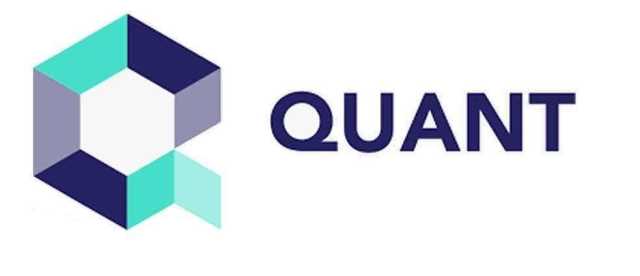What is Bitcoin and How Does It Work? Explained Simply Bitbanker Blog


But one of the main reasons Bitcoin blockchain is secure is the fact that miners need to perform a myriad of hashing operations in order to eventually find a valid solution for the next block. Some hash functions, such as Skein, Keccak, and RadioGatún, output an arbitrarily long stream and can be used as a stream cipher, and stream ciphers can also be built from fixed-length digest hash functions. Often this is done by first building a cryptographically secure pseudorandom number generator and then using its stream of random bytes as keystream. SEAL is a stream cipher that uses SHA-1 to generate internal tables, which are then used in a keystream generator more or less unrelated to the hash algorithm.
Types of Hash Functions


Technically, a cryptographic hash function needs to follow three properties to be considered effectively secure. We may describe those as collision resistance, preimage resistance, and second preimage resistance. Imagine this for a second, a hacker attacks block 3 and tries to change the data. Because of the properties of hash functions, a slight change in data will change the hash drastically.
- Used for hashing block headers, transaction data, and mostly anything that needs to be hashed in Bitcoin.
- Almost all digital signature schemes require a cryptographic hash to be calculated over the message.
- SHA-3 finalists included functions with block-cipher-like components (e.g., Skein, BLAKE) though the function finally selected, Keccak, was built on a cryptographic sponge instead.
- A more extensive list can be found on the page containing a comparison of cryptographic hash functions.
- There are many different hash functions, all of which have different properties.
- It is because of a simple rule in probability which goes as follows.
Generating a collision
- Every hash you calculate has the same chance of winning as every other hash calculated by the network.
- However, if you change even a single character in the input data, the hash will change completely.
- Also, it doesn’t matter how many times we run the two words through the algorithm, the two outputs will remain constant.
- SHA-2 is the standard that inspired SHA-256, which served as the baseline for Bitcoin’s consensus algorithm.
- You may notice that the hashes you get for block data and transaction data appear to be backwards.
- Although BLAKE and BLAKE2 have not been standardized as SHA-3 has, BLAKE2 has been used in many protocols including the Argon2 password hash, for the high efficiency that it offers on modern CPUs.
Meet the Runes protocol, one of the most recent innovations within the Bitcoin ecosystem and that can completely change this ecosystem by allowing the creation of fungible tokens on the Bitcoin blockchain. Doing the hashing process once is extremely easy, but the miner must do it millions of times. Hash functions are used in actions such as user validation and authentication, document signing, and also in cryptocurrencies, as a method to avoid counterfeiting of transactions and prevent malicious actions. It’s the need for this large amount of processing power that means new bitcoins get mined over a long period of time, not all at once. With a range this small, we could guarantee a hash collision by simply iterating through 257 inputs.


What is Bitcoin?
The message is considered authentic if the signature verification succeeds given the signature and recalculated hash digest over the message. So the message integrity property of the cryptographic hash is used to create secure and efficient digital signature schemes. MD5, SHA-1, or SHA-2 hash digests are sometimes published on websites or forums to allow verification of integrity for downloaded files,[8] including files retrieved using file sharing such as mirroring. This practice establishes a chain of trust as long as the hashes are posted on a trusted site – usually the originating site – authenticated by HTTPS.
What Is the Main Purpose of Hash?
Specifically, a miner has to try several different inputs when creating a hash value for their candidate block. In essence, they will only be able to validate their block if they generate an output hash that starts with a certain number of zeros. The number of zeros is what determines the mining difficulty, and it varies according to the hash rate devoted to the network. You will have to be extremely lucky to get a new block just like that. The nonce is an arbitrary string that is concatenated with the hash of the block.
Every hash you calculate has the same chance of winning as every other hash calculated by the network. The nonce will usually be different, but it increases in a strictly linear way. Whenever Nonce overflows (which it does frequently), the extraNonce portion of the generation transaction is incremented, which changes the Merkle root. Thus, making the final output the combined value of all the blocks. If you change one bit anywhere in the message, the entire hash value changes.
Bitcoin Primitives: Hash Functions
Second pre-image resistance prevents an attacker from crafting a document with the same hash as a document the attacker cannot control. Collision resistance prevents an attacker from creating two distinct documents https://www.tokenexus.com/ with the same hash. Quickly running through the validation process in the Bitcoin network again, a block is bundled and contains several transactions as well as information on the previous block.
Second-preimage resistance
But oftentimes you will get a value above this target and the mining software will need to increment the nonce (block’s header). This involves changing the hash and trying again, over and over again. In order to successfully mine a block and receive compensation, mining software needs to hash the block’s header in order Bitcoin Hash Functions to get it equal to or less than the target. The target is a 256-bit alphanumeric code which all Bitcoin clients share. The lower the target’s value is, the harder it is to generate a new block. These blocks are added following successful verification of the hashes within them, in a process, many compare to a lottery.
Once again, notice the word “infeasible”, it is not impossible because people do this all the time. In fact, the whole process of mining works upon this (more on that later). If you choose a random value “k” from a wide distribution, it is infeasible to find a value X such that the hash of the concatenation of k and x will give the output Y. Now, this is a fascinating property, and the application and impact that this one property has had on cryptocurrency are huge (more on that later when we cover mining and crypto puzzles). First let’s define the property, after that we will go over each term in detail. Hash functions can be used to build other cryptographic primitives.
